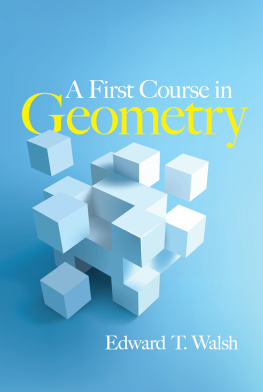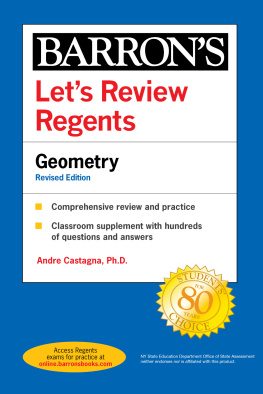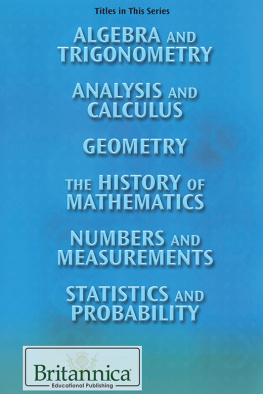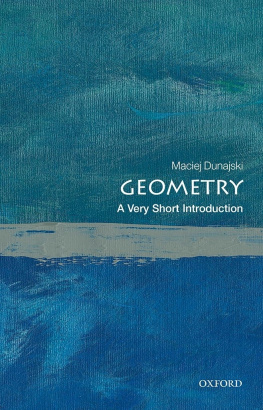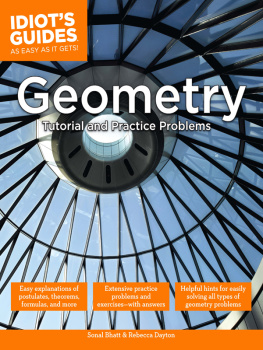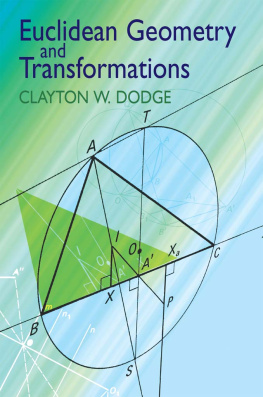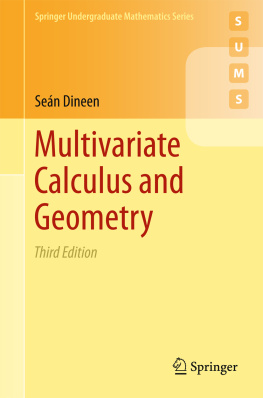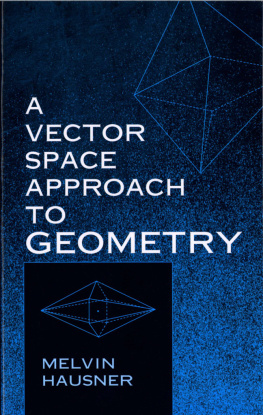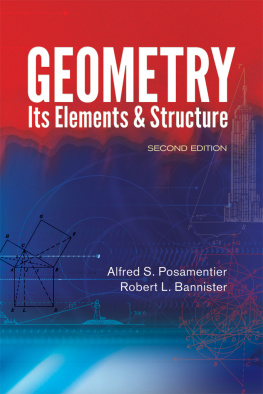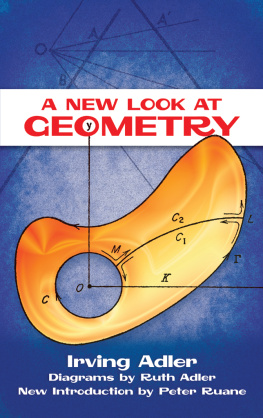
DESIGNING LEARNING ENVIRONMENTS FOR DEVELOPING UNDERSTANDING OF GEOMETRY AND SPACE
STUDIES IN MATHEMATICAL THINKING AND LEARNING
Alan H. Schoenfeld, Series Editor
Carpenter/Fennema/Romberg (Eds.) Rational Numbers: An Integration of Research
Cobb/Bauersfeld (Eds.) The Emergence of Mathematical Meaning: Interaction in Classroom Cultures
English (Ed.) Mathematical Reasoning: Analogies, Metaphors, and Images
Fennema/Nelson (Eds.) Mathematics Teachers in Transition
Fennema/Romberg (Eds.) Mathematics Classrooms That Promote Understanding
Lajoie Reflections on Statistics: Learning, Teaching, and Assessment in Grades K-12
Lehrer/Chazan (Eds.) Designing Learning Environments for Developing Understanding of Geometry and Space
Ma Elementary Teachers Mathematical Knowledge and Its Relationship to Teaching Competence: A United States-China Comparison
Reed Word Problems: Research and Curriculum Reform
Romberg/Fennema/Carpenter (Eds.) Integrating Research on the Graphical Representation of Functions
Schoenfeld (Ed.) Mathematical Thinking and Problem Solving
Sternberg/Ben-Zeev (Eds.) The Nature of Mathematical Thinking
Wilcox/Lanier (Eds.) Using Assessment to Reshape Mathematics Teachers: A Casebook for Teachers and Teacher Educators, Curriculum, and Reform
DESIGNING LEARNING ENVIRONMENTS FOR DEVELOPING UNDERSTANDING OF GEOMETRY AND SPACE
Edited by
Richard Lehrer
University of WisconsinMadison
Daniel Chazan
Michigan State University

First Published by
Lawrence Erlbaum Associates, Inc., Publishers
10 Industrial Avenue
Mahwah, NJ 07430
Transferred to Digital Printing 2009 by Routledge
270 Madison Ave, New York NY 10016
2 Park Square, Milton Park, Abingdon, Oxon, OX14 4RN
Copyright 1998 by Lawrence Erlbaum Associates, Inc.
All rights reserved. No part of this book may be reproduced in any form, by photostat, microfilm, retrieval system, or any other means, without prior written permission of the publisher.
Cover design by Kathryn Houghtaling Lacey
Library of Congress Cataloging-in-Publication Data
Lehrer, Richard.
Designing Learning Environments for developing understanding of geometry and space / Richard Lehrer, Daniel Chazan
p. cm.
Includes bibliographical references and indexes.
ISBN 0-8058-1948-7 (alk. paper). ISBN 0805819495 (pbk.: alk. paper)
1. GeometryStudy and teaching. I. Chazan, Daniel. II. Title.
QA461.L45 1998
516.0071dc21
9748323
CIP
The final camera copy for this work was prepared by the author, and therefore the publisher takes no responsibility for consistency or correctness of typographical style.
Publishers Note
The publisher has gone to great lengths to ensure the quality of this reprint but points out that some imperfections in the original may be apparent.
Contents
I
WHY TEACH GEOMETRY?
II
STUDIES OF CONCEPTUAL DEVELOPMENT
9 Students Understanding of Three-Dimensional Cube Arrays: Findings From a Research and Curriculum Development Project
III
DEFINING A NEW SEMANTICS OF SPACE: COMPUTERS, SOFTWARE, AND THE ELECTRONIC WORLD
19 Teachers and Students Investigating and Communicating About Geometry: The Math Forum
Preface
Despite a long intellectual history dating back to the origins of civilization, and a recent resurgence as cutting-edge mathematics, geometry and spatial visualization in school are often compressed into a caricature of Greek geometry, generally reserved for the second year of high school. The resulting impoverished view of the mathematics of space rebounds throughout schooling generally to diminish student (and adult) understanding of mathematics.
Among mathematicians and mathematics educators, there is increasing consensus, however, that geometry and spatial visualization deserve a more prominent role in school mathematics. Formalist views of mathematics as a game in which abstract symbols are manipulated (views ascendant in the second half of the 19th and the early part of the 20th century) are now challenged by views emphasizing the role of empirical methods in mathematics. Contemporary mathematicians studying chaos, fractals, and nonlinear dynamics rely on computer-generated visual representations to perform and display the results of experiments. Moreover, not only do new computer technologies make mathematical experimentation possible and plausible, but these technologies have been widely adopted in a range of cultural practices. At the same time, the mathematics education reform movement accords a central role to mathematical exploration and sense-making and supports the use of technology and visual representations. This shift implies the need to reexamine the nature of the school mathematics curriculum, the goals and aims of teaching, and the design of instruction.
Rather than looking to high-school geometry as the locus (and all too often, the apex) of geometric reasoning, the authors of this volume, many of whom were active in the National Center for Research in Mathematical Sciences Education (NCRMSE), suggest that reasoning about space can and should be successfully integrated with other forms of mathematics, starting at the elementary level and continuing through high school. Reintegrating spatial reasoning into the mathematical mainstream (indeed, placing it at the core of K-12 mathematics environments that promote learning with understanding) will mean increased attention to problems in modeling, structure, and design and reinvigoration of traditional topics like measure, dimension, and form: Geometry education should include contributions to the mathematics of space that were developed after those of the Greeks.
This volume reflects our appreciation of the interactive roles of subject matter, teachers, students, and technologies in designing classrooms that promote understanding of geometry and space. Although these elements of geometry education are mutually constituted, the volume is organized to highlight our vision of a general geometry education, the development of student thinking in everyday and classroom contexts, and the role of technologies. Every contributor addresses all of these themes, albeit in different proportions.
, Gravemeijer suggests that everyday experiences (and the informal knowledge that even very young children construct from them) serve as the foundation of a mathematics of space: What children first understand intuitively and informally about space can be progressively mathematized (redescribed and elaborated mathematically) through guided reinvention. This approach, he argues, together with the use of real-world contexts, not only provides a solid base for geometry education but also supports students ability to reflect and reason outside the realm of mathematics. In the third chapter, Chazan and Yerushalmy decant the old wine of Euclidean geometry into the crystal of classroom argument and electronic technologies. They remind us that for the Greeks, proof was a form of argument, not a ritual, and they suggest that electronic tools make new forms of argument in the classroom both possible and fruitful. Devaney concludes this first section of the volume by extending the reach of geometry education to include the contemporary topic of chaos. He describes how new computer technologies for envisioning and playing chaos games in the classroom can be used to extend the mathematical reach and grasp of high-school students.
Next page

